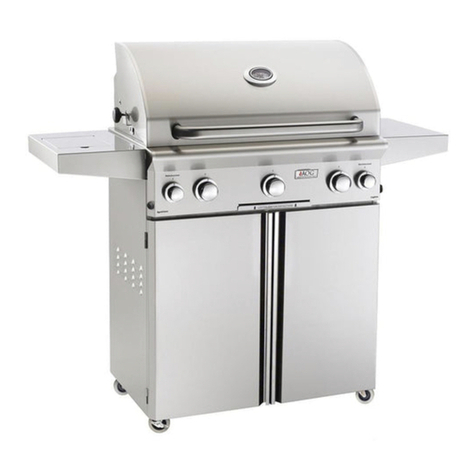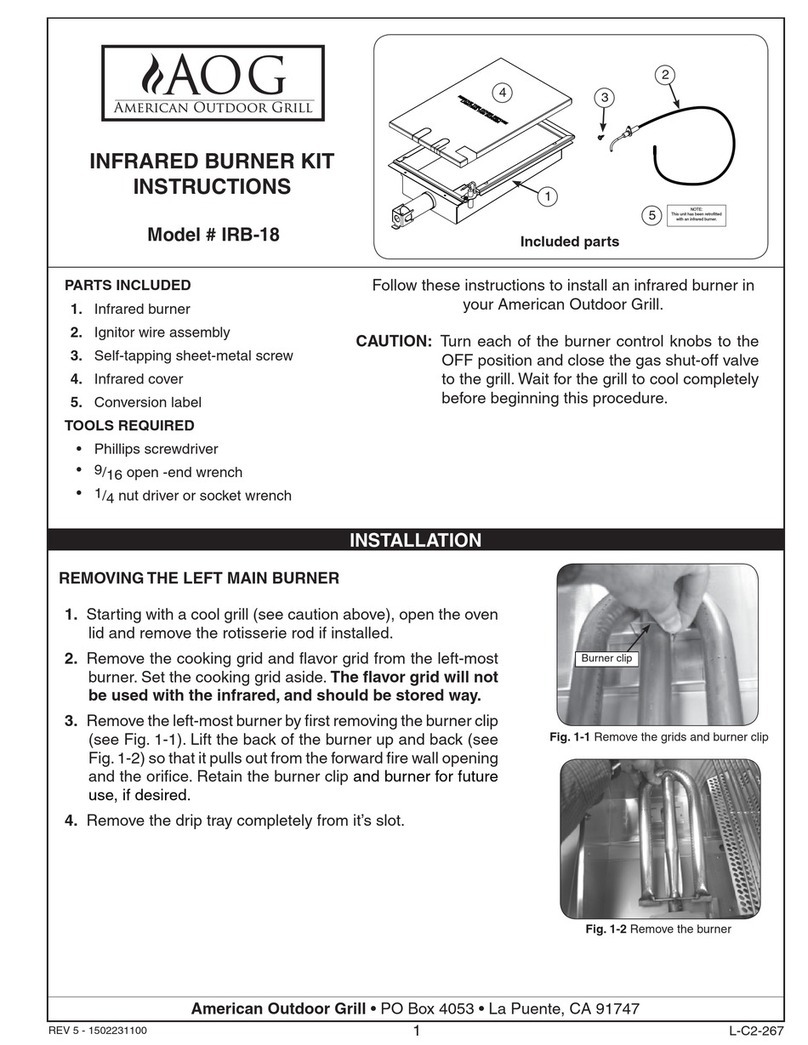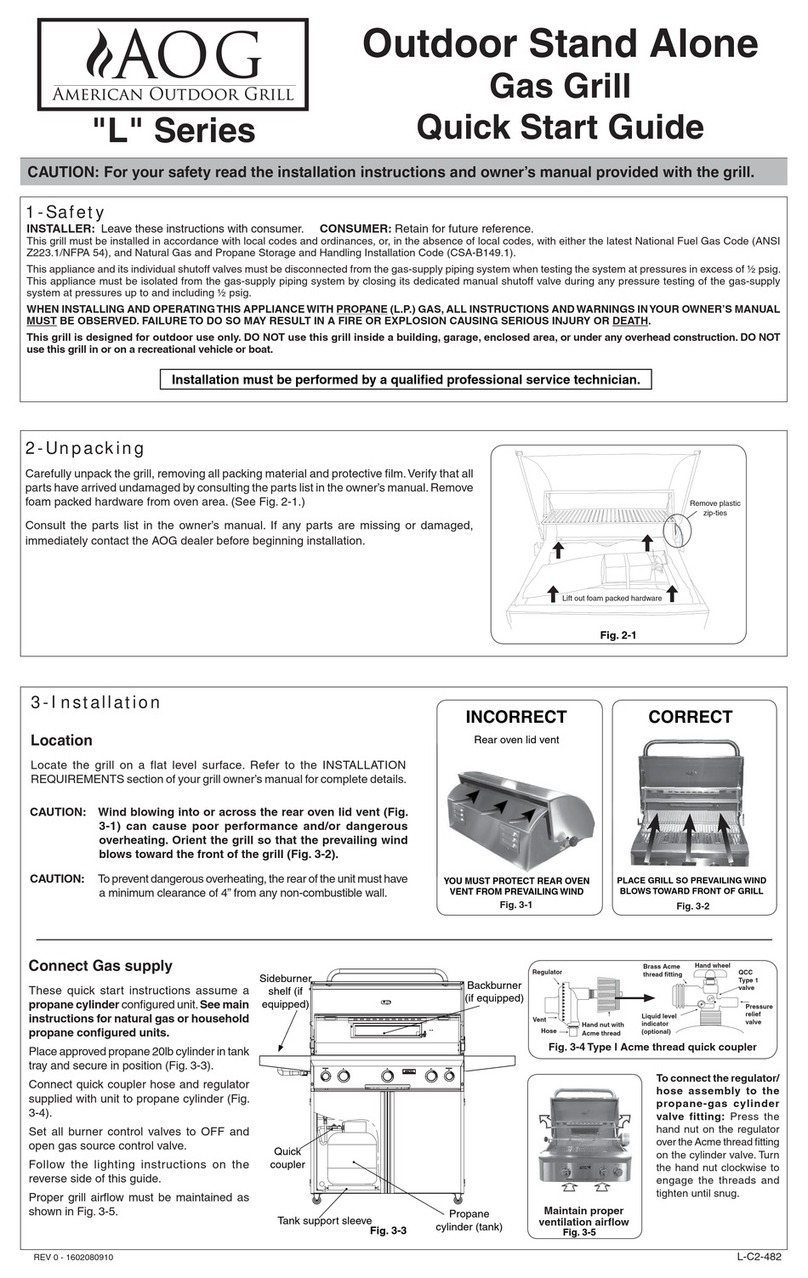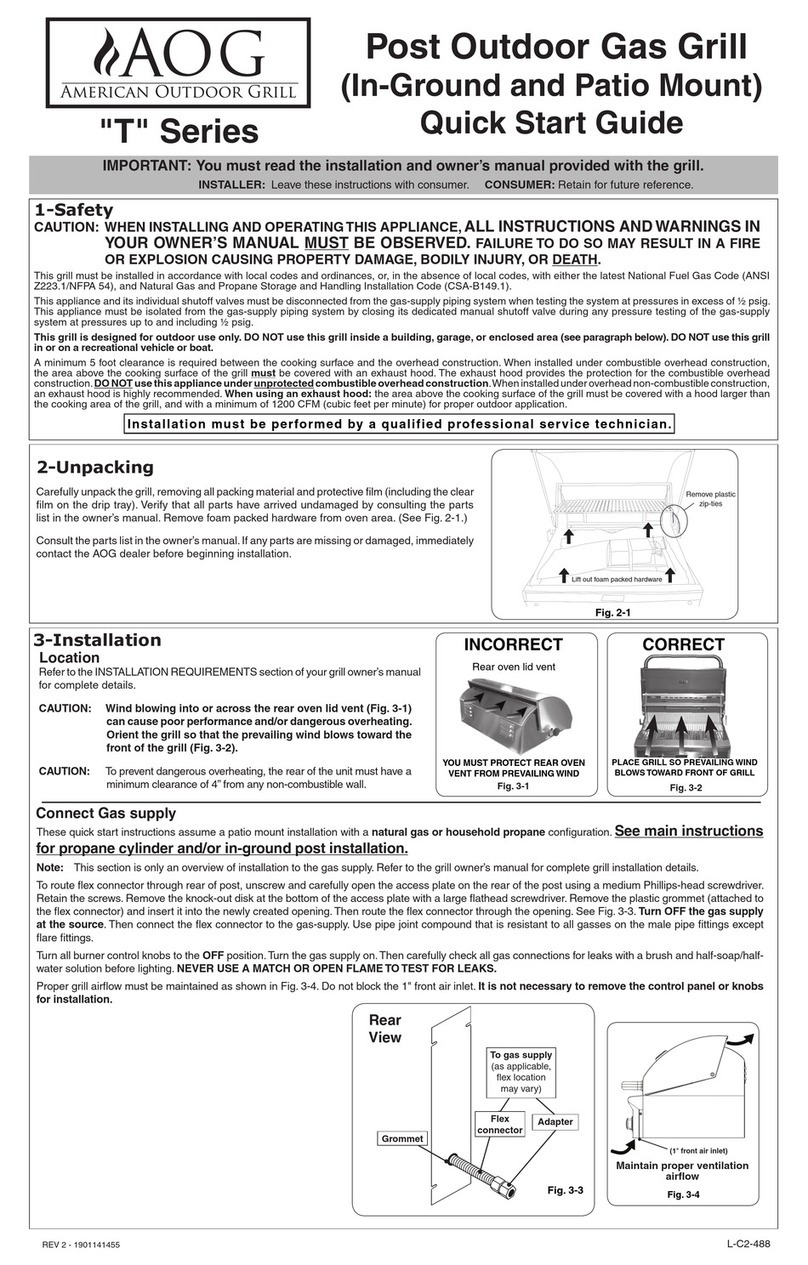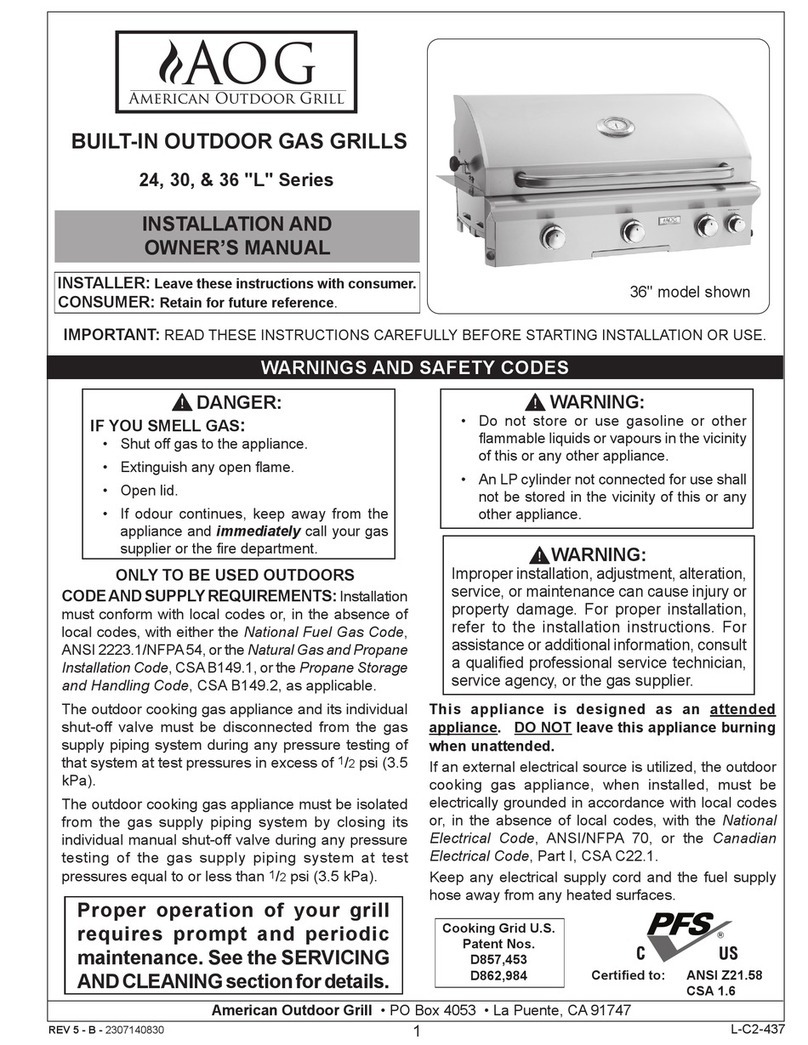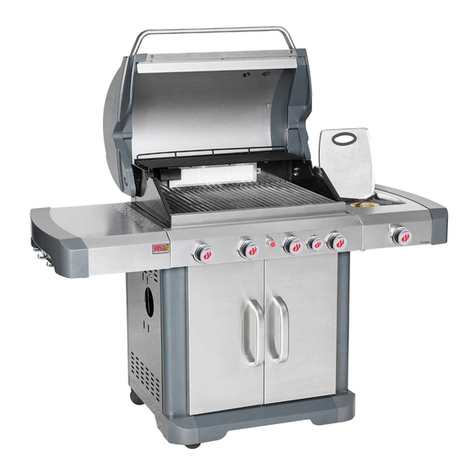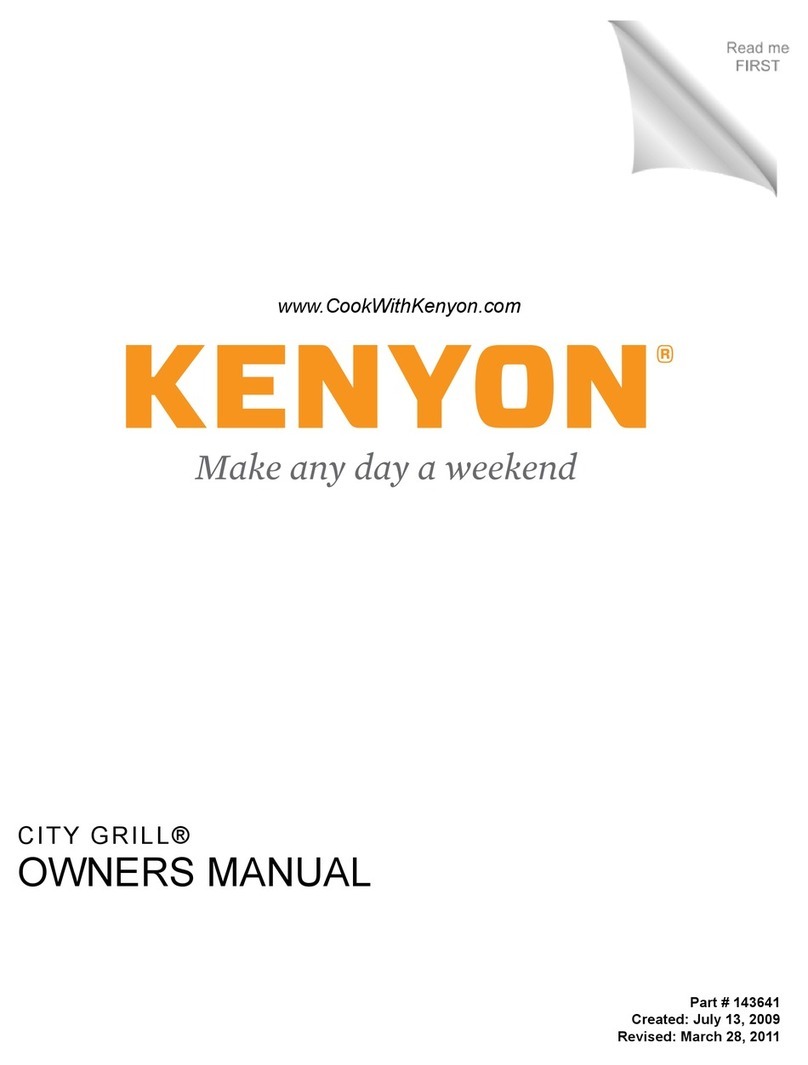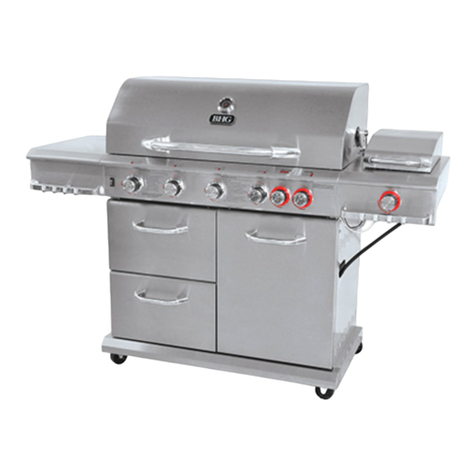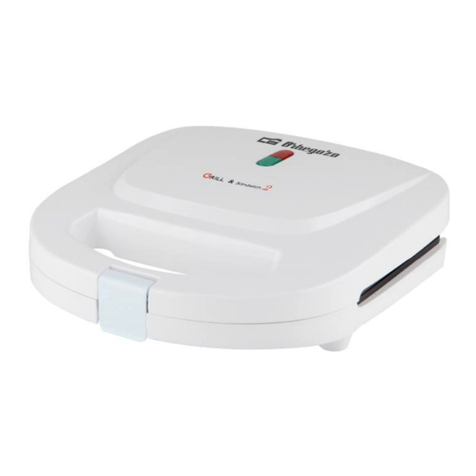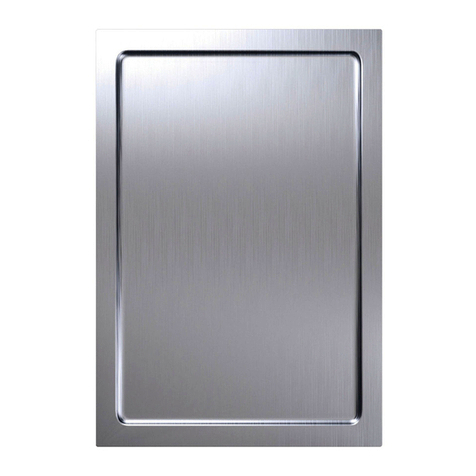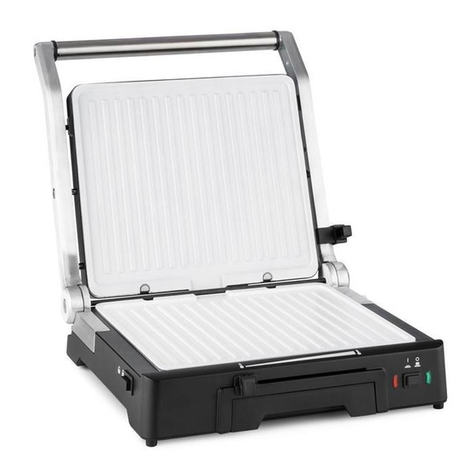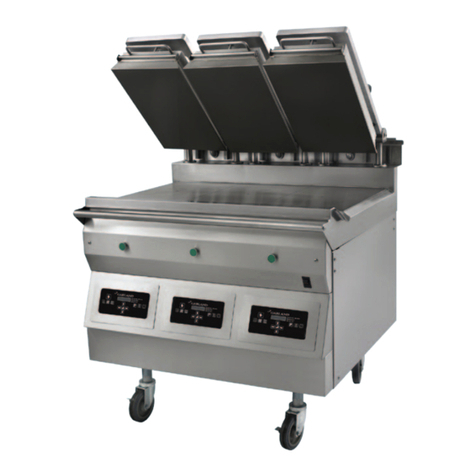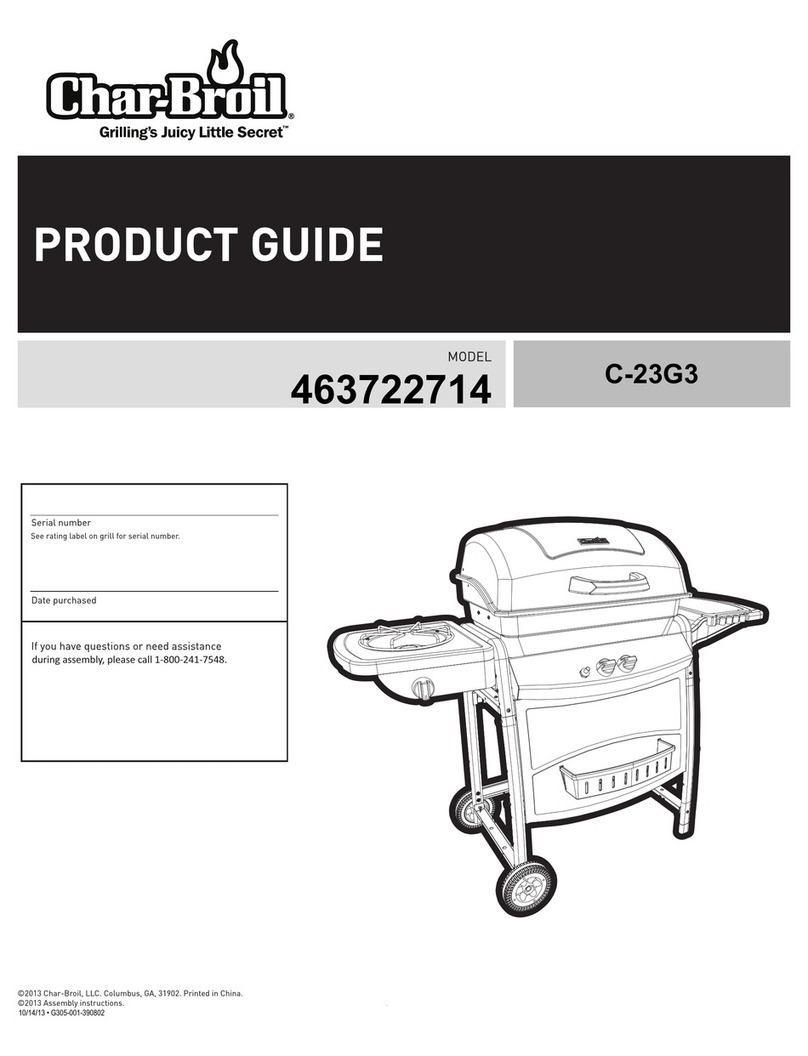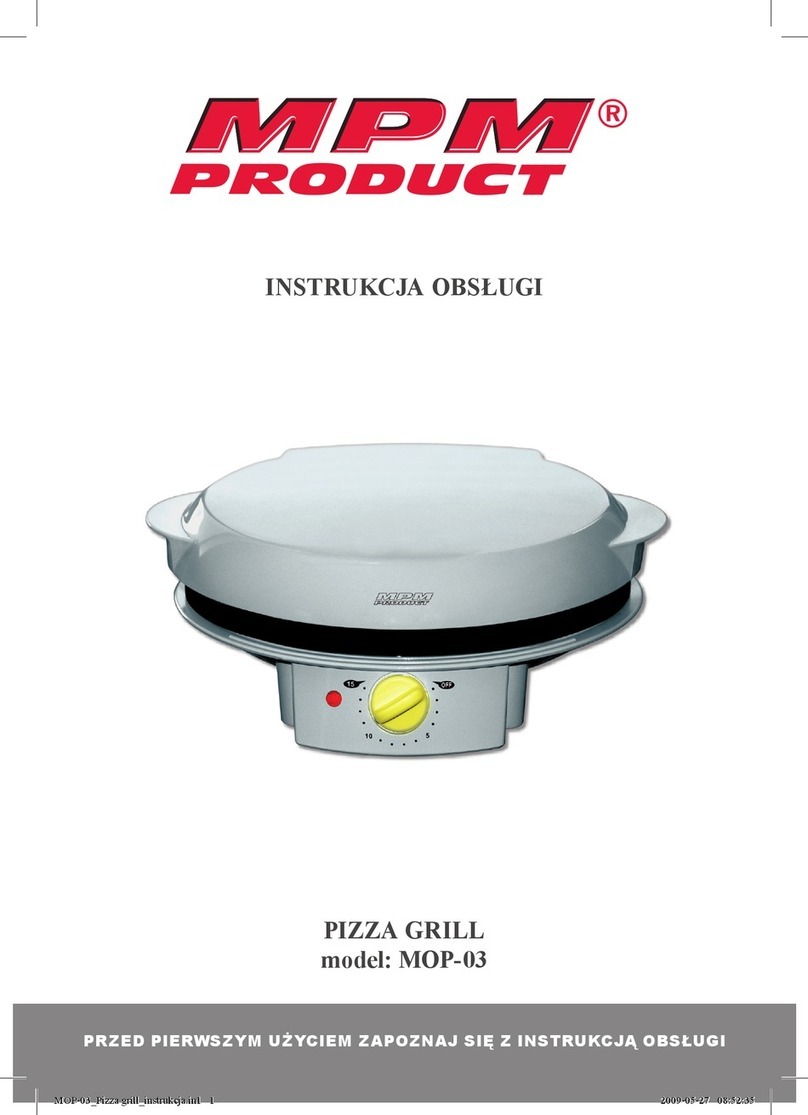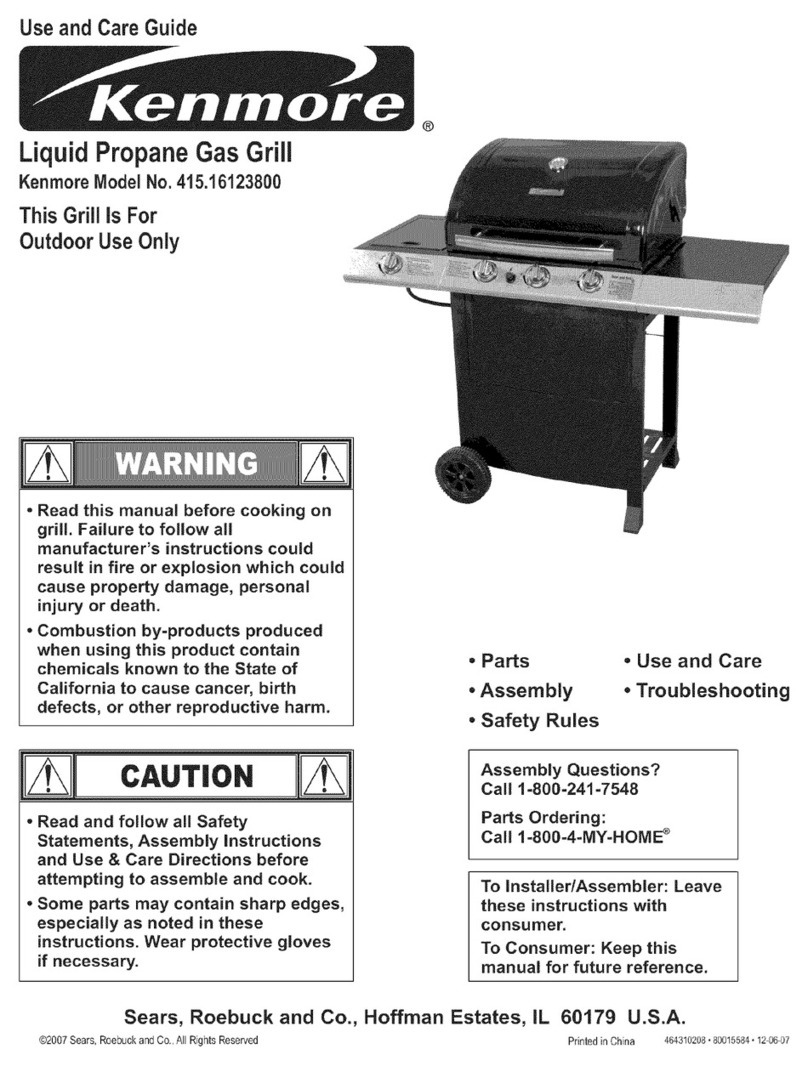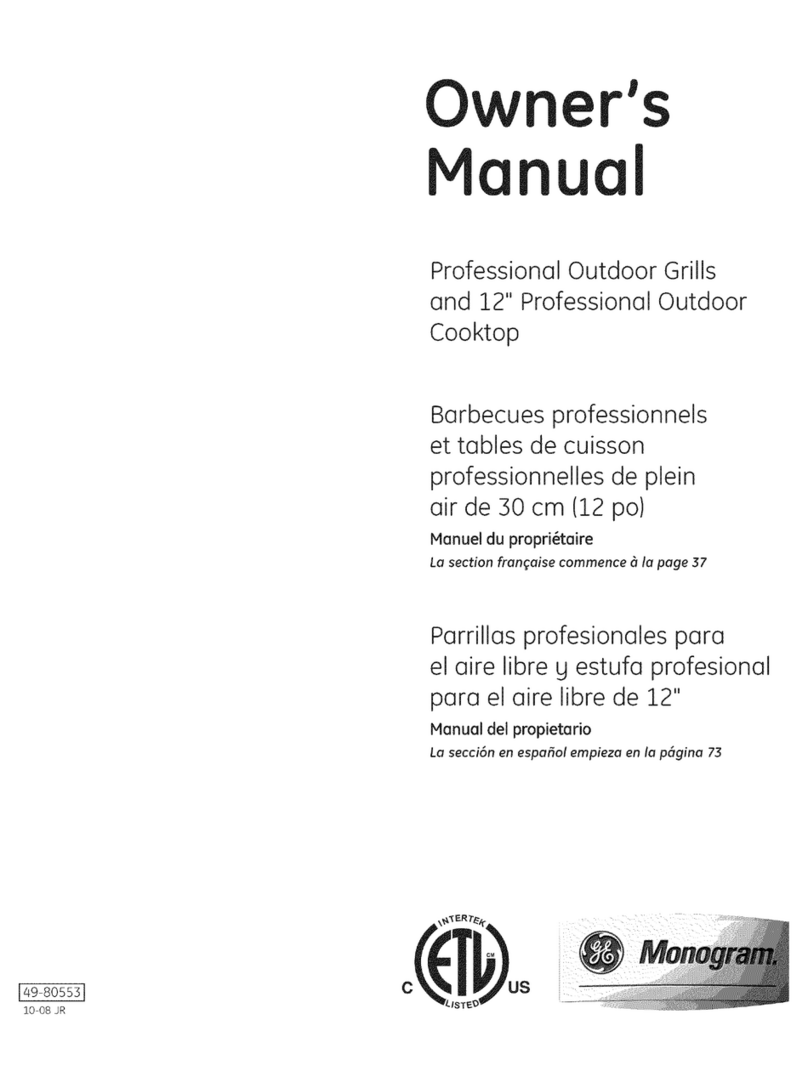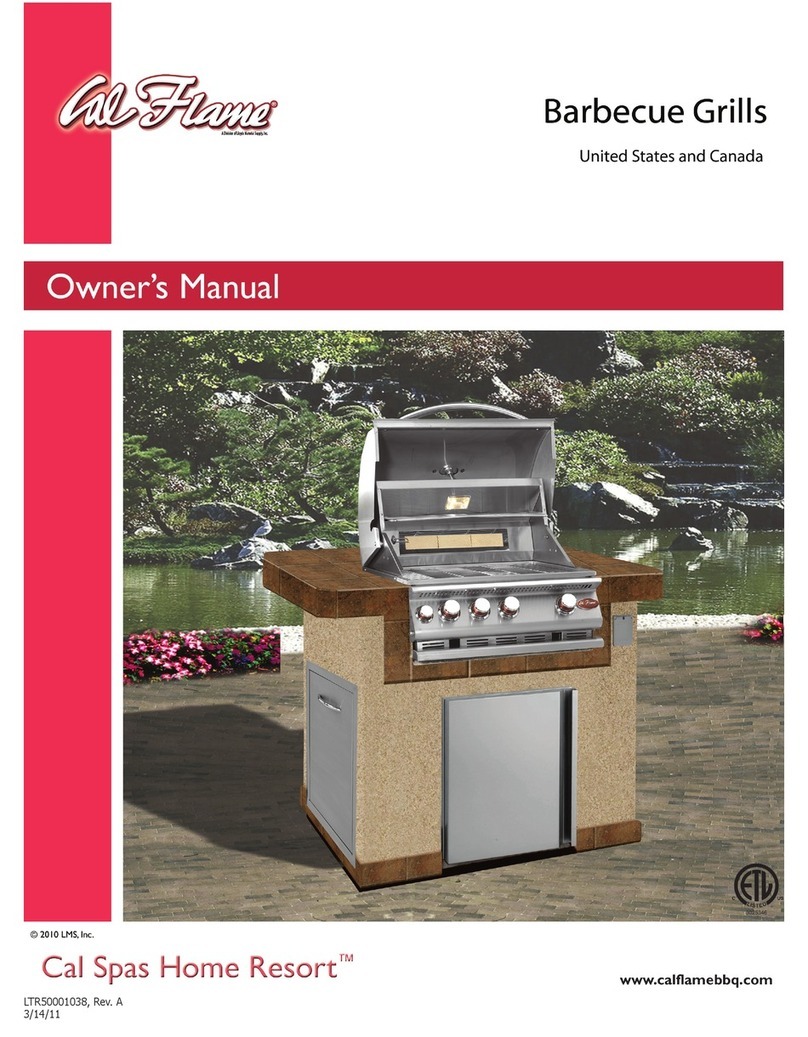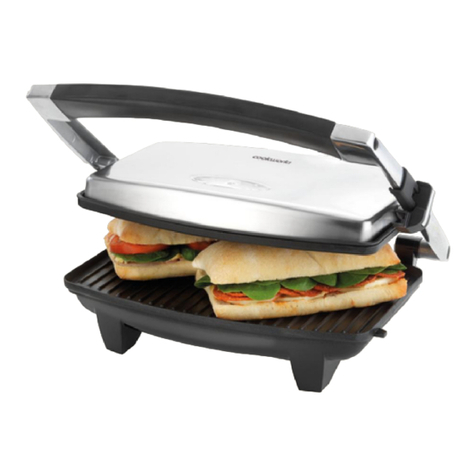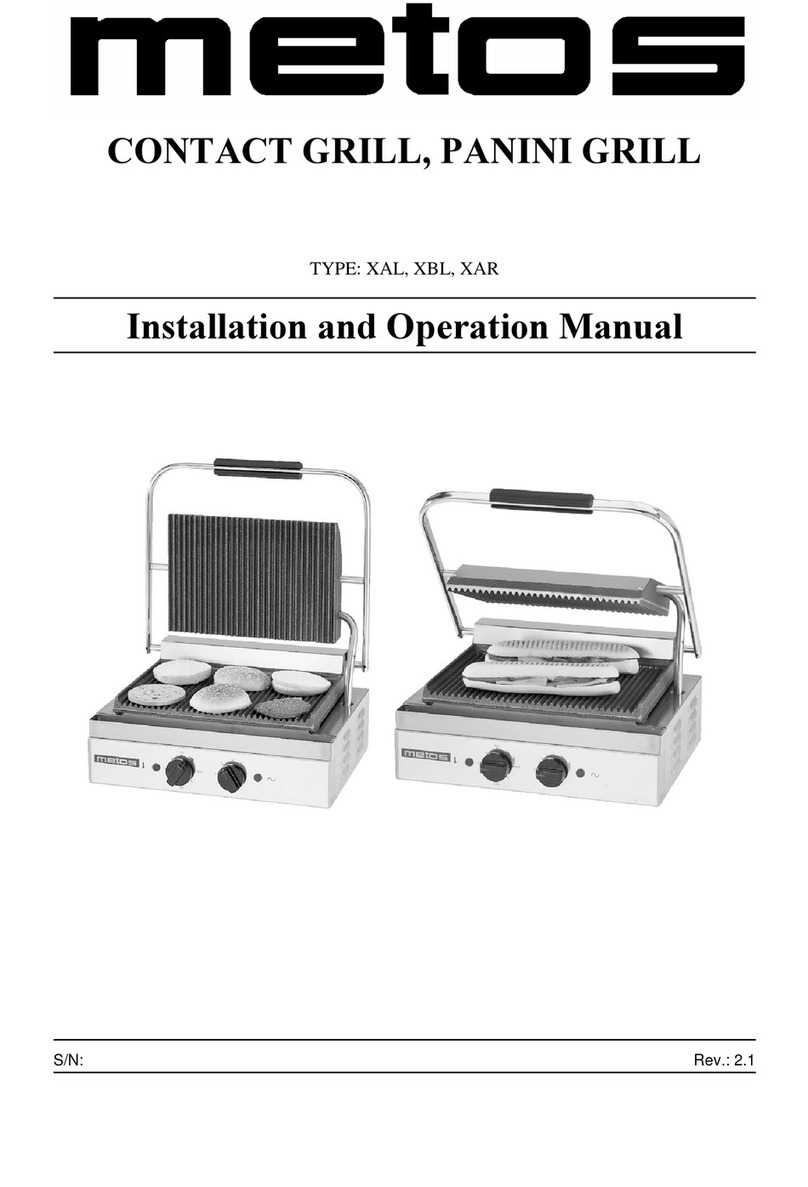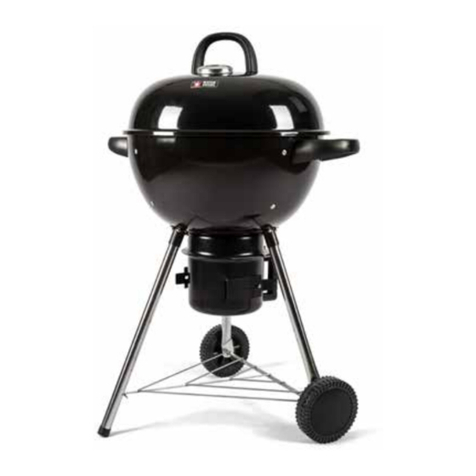
REV 11 -1401031355 L-C2-179
2
AVERTISSEMENTS ET CODES DE SÛRETÉ
INSTALLATEUR: Laissez ces instructions avec le
consommateur.
CONSOMMATEUR: Maintenez pour la future référence.
INSTALLATION ET CONSIGNES
D’UTILISATION
DANGER
S’il y a une odeur de gaz:
1. Coupez l’admission de gaz de l’appareil.
2. Éteindre toute flamme nue.
3. Ouvrir le couvercle.
4. Si l’odeur persiste, gardez loin de l’appareil,
et appelez immédiatement le fournisseur de
gazou le service d’incendie.
AVERTISSEMENT
1. Ne pas entreposer ni utiliser de l’essence ni
d’autres vapeurs ou liquides inflammables
dans le voisinage de l’appareil, ni de
proximité de tout autre appareil.
2. Une bouteille de propane qui nest pas
raccordée en vue de son utilisation, ne doit
pas être entreposée dans le voisinage de
cet appareil ou de tout autre appareil.
CONDITIONS DE CODE ET
D’APPROVISIONNEMENT: Ce barbecue doit
être installé selon des codes et des ordonnances
locaux, ou, en l’absence des codes locaux, avec
l’un ou l’autre le plus défunt code national de gaz
de carburant (norme ANSI Z223.1/NFPA 54), et le
code d’installation de gaz naturel et de propane
(CSA-B149.1).
Cet appareil et ses différents robinets d’isolement
doivent être démontés du système sifflant d’offre
de gaz en examinant le système aux pressions au-
dessus du ½ psig (kPa 3.5).
Cet appareil doit être isolé dans le système sifflant d’offre
de gaz par fermeture ses différents robinets d’isolement
manuels pendant tous les essais sous pression du circuit
d’alimentation de gaz aux pressions jusques et y compris
Toutes les sorties électriques à proximité du barbecue
doivent être correctement fondues selon des codes
locaux ou, en l’absence des codes locaux, avec le code
électrique national, ANSI/NFPA 70, ou le code électrique
canadien, CSA C22.1, qui est jamais applicable.
Gardez tout cordon d’alimentation électrique et tuyau
d’alimentation en combustible a l’écart des surfaces
chauffées.
24, 30 et 36 SÉRIES
LE GAZ EXTÉRIEUR GRILLE TOUT
LE GAZ EXTÉRIEUR GRILLE TOUT
ENTIER LE MODÈLE DE SLIDE-IN
ENTIER LE MODÈLE DE SLIDE-IN
AVERTISSEMENT
L’installation inexacte, l’ajustement, le
changement, le service ou l’entretien
peuvent causer des dommages ou
des dégats matériels. Référez-vous à
ce manuel. Pour l’aide ou l’information
additionnelle consultez un installateur
qualifié et professionnel, l’agence de
service, ou le fournisseur de gaz.
Important: Lisez ces instructions
soigneusement avant de
commencer l’installation.
American Outdoor Grill • PO Box 4053 • La Puente, CA 91747
09-06
Certifié à la norme ANSI : Z21.58b-2012
CSA : 1.6b-2012
